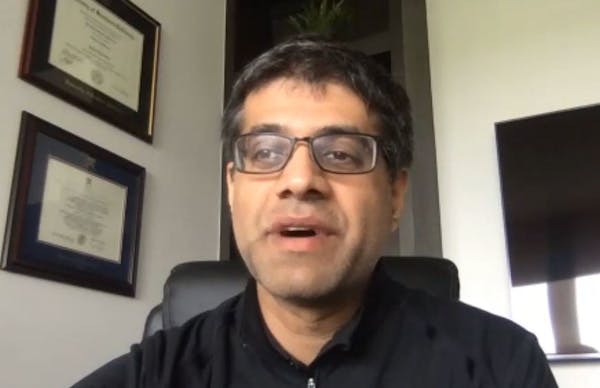 See
more of the story
See
more of the story
NFL teams didn't need a COVID-19 outbreak scare to grab their attention. They are reminded of the seriousness of what they are attempting every day when they show up for work and encounter a litany of tests and safety measures.
Plus, 177,000 deaths (and climbing) hammers home the point pretty clearly.
The jarring error that happened inside the NFL's quasi-bubble Sunday raises concerns about testing outcomes and, sadly, provides ammunition for conspiracy theorists who believe this virus is either a hoax or not as widely spread as scientific data show. Look around; it's not hard to find folks of that opinion.
A New Jersey lab contracted by the NFL acknowledged Monday that 77 false positives reported among 11 teams a day earlier were the result of "isolated contamination." The Vikings had 12 of the 77 cases, including eight players, all of whom returned to practice Monday.
BioReference Laboratories released a statement that offered little insight into what caused the false positives. It was basically an "our bad, carry on" acknowledgment.
The lab is one of five used by the NFL for COVID-19 testing. That list should be trimmed to four after this episode. At the very least, the Vikings should insist on using a different lab going forward.
This wasn't a harmless clerical error. Whatever happened, the lab sent the NFL into scramble mode Sunday and likely caused concern inside organizations that are trying their darndest to make this work. The false positives forced teams to either cancel or alter practice plans and retest those individuals.
False positives are inevitable. The Vikings already have had a few. But 77 in one day, including a dozen from one team? Players and coaches need to have confidence in testing and safety protocols.
Doctor: NFL's COVID-19 testing issues gave it a 'fire drill'
The league has done a commendable job in keeping the virus at bay with infinitesimal positivity rates since training camps opened. The NFL's chief medical officer labeled this situation a "rare event" and told reporters the problem has been identified and corrected.
Great, but who's to say something similar can't happen again, only with worse timing? The false alarm reinforced the need for diligence in following safety guidelines — inside and outside team facilities — while also shining a light on the precarious path that awaits teams once the season starts.
Consider this weekend a trial run. What happens if something like this happens a month from now? How will teams respond if they experience a rash of positive tests — even if they turn out to be false positives — the day before a game? Will the league and BioReference have enough time to sort everything out before kickoff?
Mike Zimmer isn't a man of great patience. One can imagine the head coach's reaction if another testing mistake sidelined multiple starters for a regular-season game.
Nimbleness will be required of all teams. That, and quality depth on the roster. Teams will encounter the usual injury caseload. Now they also must manage potential roster unpredictability during a pandemic.
The NFL should rename the practice squad to the "get-ready-because-you-likely-will-see-the-field-at-some-point" squad. Teams with the most complete rosters, top to bottom, will be best positioned to handle roster fluidity and abrupt changes.
The NFL has long considered competitive fairness in making important decisions and rules. It will be interesting to see how this unprecedented circumstance guides its deliberations. The NFL hasn't announced yet how it will deal with different circumstances that arise. It is unclear if it will follow MLB's model of postponing games in response to positive tests.
Imagine a team loses five starters one week to positive tests (or false positives), including its quarterback and best defensive player. Will the league require that team to push forward and play under the time-honored "next man up" mantra? The league announced that it will consult an advisory committee on these issues, but what's deemed fair could become a moving target on a case-by-case basis.
Hopefully, no team faces a scenario such as that, but the events this weekend highlighted that testing procedures aren't foolproof. Things can go sideways in a blink. Then what?
chip.scoggins@startribune.com


